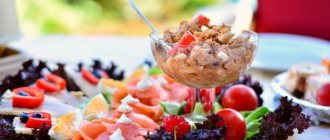Increasingly, modern people are experiencing impaired insulin sensitivity. With such disorders, various diseases are formed: from acne on the face to obesity. Only a few can boast of balanced sensitivity to this important hormone. A diet for insulin resistance will help regulate the balance within the body and set it up for proper functioning. By adhering to an insulin diet, you can finally get rid of stagnant excess weight that just didn’t want to go away.
Basic diet rules
In fact, there is no exact diet, rather we will explain why you should eliminate certain foods from your menu and which ones you should emphasize in your diet.
Limit carbohydrates
It makes a big difference whether you take your carbohydrates from fruits, vegetables, whole grains, or with added fat or sugar. When it comes to flour, it is best to consume whole grains. The best option is to use 100% wholemeal flour or almond and coconut flour for best results.
Avoid sweetened drinks
All types of sugars can raise blood sugar levels and worsen insulin resistance. But there are some sources of sugar and carbohydrates that are more harmful than others. Avoid drinking soft drinks sweetened with sugar, fructose corn syrup, iced tea, energy drinks and those containing sucrose and other artificial sweeteners.
Instead of drinking sugary drinks, look for water, soda, herbal or black tea and coffee. If you need to add some sweeteners to your food or drink, use natural ones such as honey, stew, dates, maple syrup or molasses
Eat more fiber
Many studies have found that consuming whole grains is associated with a lower chance of developing type 2 diabetes, but people have to limit the amount of processed (packaged) whole grains.
Consuming high fiber foods such as artichokes, peas, Brussels sprouts, broccoli, beans, flaxseeds, cinnamon and cinnamon help regulate insulin resistance. These vegetables are high in fiber and have fewer calories and also have anti-inflammatory properties.
Consume Healthy Fats
Avoid eating unhealthy fats such as trans fats and saturated fats and instead add unsaturated fats to your diet.
Increasing fat is important for people with insulin resistance and diabetes due to the reduction of carbohydrates.
Eating foods rich in monounsaturated fatty acids improves glycemic control when fat replaces carbohydrates. Foods you can consume to increase healthy fats are olive oil, avocado, nuts and seeds.
In addition to increasing your unsaturated fat content, you should increase your omega-3 fatty acids, which means eating fish at least twice a week. Suitable mackerel, salmon, herring, tuna and white fish. Omega-3 fatty acids can be obtained from walnuts, flaxseeds, hemp seeds and egg yolks.
Take enough protein
A study found that increasing your protein intake helped you lose more pounds. Protein intake is important for people with insulin resistance because protein is relatively neutral in glucose metabolism and preserves muscle mass, which may be reduced in people with decreased insulin sensitivity.
Proteins such as chicken, fish, eggs, yogurt, almonds, lentils help regulate blood sugar levels.
Eat dairy products
Calcium, vitamin D, milk fat and, in particular, transpalmitoleic acid reduce the risk of developing insulin resistance and type 2 diabetes.
When purchasing dairy products, choose those labeled as "organic" rather than regular products from the cow. Sheep and goat's milk are even better options, and kefir will also work.
Plan your meals
When it comes to managing insulin resistance, weight loss is key. You can lose weight by following weight loss recommendations to reduce insulin sensitivity, but you also need to reduce your calories. Research has shown that growing portion sizes are important for the development of obesity. Eat smaller, more frequent meals and never be too hungry because this increases your chances of eating at your next meal. Start small and work your way out if necessary, but never overfill your plate.
You should always have proteins, fats and vegetables (fiber) on your plate.
An insulin resistance diet balances clean protein, healthy fats, high-fiber foods, and high-quality dairy products. People with this condition should avoid consuming packaged foods, sweetened drinks, and refined carbohydrates.
Intermittent fasting helps overcome insulin resistance
By taking longer intervals between meals, you give the body the opportunity to pause insulin production and take a break. And this is a very important condition for the cells to begin to respond to the action of insulin again. I wrote more about the optimal frequency of nutrition here.
You should start with a 12-hour break between dinner and breakfast. Depending on how you feel, you can gradually increase this interval and practice so-called intermittent fasting. You can determine its format yourself –
based on how you feel and what suits your daily schedule.
Some common intermittent fasting formats include:
- break 16 hours and eat within an 8-hour window (frequency from 1 time per week to 7);
- fasting for 24 hours from 1 to 3 times a week;
- fasting 36 hours 1-2 times a week.
The practice of intermittent fasting can be very effective in lowering insulin levels and reversing insulin resistance, but it is important to listen to your body's signals and find a format that works for you.
Fasting that is too intense for you can turn on energy saving mechanisms, put the body into a state of stress and neutralize all the positive effects.
Authorized Products
- The basis of the diet should be vegetables: various varieties of cabbage, lettuce, cucumbers, spinach, eggplant, garlic, turnips, bell peppers, raw carrots, squash, radishes, mushrooms, radishes and others with a low glycemic index. In general, their consumption should be increased to 600 g per day in raw form (this is how all vitamins and minerals are preserved). For the most part, you need to eat green vegetables and leafy salads, rich in lutein and indoles , which have antioxidant properties. To improve the taste, you can add sesame seeds, lemon juice, flax seeds and chia seeds, nuts and season with various vegetable oils to improve the taste. Sea kale (a source of iodine, fiber and vitamins) is a low-calorie product and can be added to any salads. For variety, you can eat vegetables stewed and baked. Potatoes are excluded or allowed in limited quantities and rarely.
- Legumes are also an integral part of the diet as they are sources of protein, fiber, some minerals and omega-3 fatty acids . You can eat lentils, beans, peas, green peas, and green beans. Several times a week you can allow small portions of legumes in combination with other vegetables.
- Lean meat (beef, veal) and poultry (chicken, turkey without skin). These products are boiled, baked or steamed.
- Low-fat fish (pollock, pike perch, blue whiting, cod, pike, navaga, hake, carp, notothenia). Fatty fish, which are also recommended to be consumed, are high in omega-3 and omega-6 . Fish is rich in phosphorus, magnesium, potassium, fat-soluble vitamins, and protein is easier to digest, so you need to include it in your diet more often than meat. The cooking methods are the same as for meat.
- Rye bread, whole grain bread, bran bread and whole grain bread. Take 1-2 pieces per day, but it is better in the first half of the day.
- The amount of cereals in the diet is limited. Once or twice a week you can eat a serving of wild rice, buckwheat and oatmeal. Millet, pearl barley, and semolina are excluded due to their high GI.
- Unsweetened berries are best eaten fresh, but they can also be eaten in compotes or mousses. Among fruits, you should give preference to citrus fruits, avocados, cherries, cranberries, plums, apples, gooseberries, wild strawberries, lingonberries, raspberries, and strawberries.
- Vegetable oils added to prepared dishes. Of particular value are walnut, sea buckthorn, cedar, olive, pumpkin, avocado, corn, flaxseed, and sesame oils due to the correct ratio of omega-3 and omega-6 . It should be noted that vegetable oils should be consumed only in their natural form and no more than 2 tablespoons. l per day.
- First courses cooked in water, vegetable broth or weak meat broth. These should be predominantly vegetable/mushroom soups, due to their low calorie content. Potatoes are not added to soups or are present in small quantities.
- Low-fat fermented milk drinks, milk and not very fat cottage cheese, feta cheese and cheese with 30% fat content. Sour cream should be used with the least fat content and only as an additive to dishes (1-2 tbsp).
- Soft-boiled eggs, omelet with mushrooms and vegetables (better done steamed or in a dry frying pan).
- You can eat up to 1 tsp of honey. in a day.
- Any nuts 30-40 g per day in their natural form (not fried or salted) are sources of beneficial alpha-linolenic acid and essential fiber, magnesium, zinc, iodine, iron and cobalt. Don't forget about the high calorie content of all nuts.
- Among drinks, preference should be given to vegetable and fruit juices, herbal teas, coffee with milk, but without sugar, green tea with lemon and ginger, and rosehip decoction.
Diagnosis of the disease and treatment
Insulin resistance is an incurable, progressive disease. That is, it is not possible to completely cure it.
On the other hand, it can be controlled. For diagnosis, special tests for insulin resistance are used. It is necessary to donate blood for the necessary tests to confirm the presence of pathology.
Low carb diet
The simplest and, at the same time, the most difficult way to cope with the disease is a low-carbohydrate diet with a high protein content, physical activity and taking medications that increase the sensitivity of tissues to insulin.
Physical exercise
Strength training (or anaerobic training) helps the muscles begin to “see” insulin again. Unlike fat tissue, muscle tissue can be affected. During anaerobic training, a chain of adaptation processes is launched that awakens sensitivity to insulin.
That is, an increase in receptor sharpness is an adaptation to muscle work in anaerobic mode. Therefore, for patients with insulin resistance, physical activity is mandatory.
Product exclusion
A low-carbohydrate diet is now becoming lifelong; without exaggeration, the patient’s life depends on it. Read how to switch to proper nutrition at this link.
It completely excludes the use of:
- refined sugar;
- muffins, baked goods made from white flour;
- fatty foods;
- as well as foods with a high glycemic index.
Ketogenic diet
Medicines
The third component is taking medications. Metformin gives good results, but the doctor may prescribe other drugs, since each treatment is individual.
Forecast
Speaking of forecasts, there are two pieces of news.
- The bad news is that insulin resistance cannot be completely cured.
- The good news is that through a healthy diet and exercise, you can keep your pathology under control and live a full life.
And the realization that returning to your previous diet can be lethal should become an incentive not to give up in the fight for health.
Is it possible to cure insulin resistance?
The main method of combating this pathological condition is to reduce fat deposits in the body. This is done either radically (surgically) or conservatively (diet and exercise). A properly selected diet allows you to reduce the consumption of harmful carbohydrates; regular sports activities strengthen muscles and burn excess fat. By changing your lifestyle to a healthy one, your metabolism (metabolism in the body) returns to normal and the development of diabetes is prevented.
Return to contents
The need for a diet for insulin resistance
For insulin resistance, diet is the main method of therapy. Dietary nutrition for this pathology allows you to achieve several goals:
This type of nutrition helps you get your weight in order.
- normalize metabolic processes in the body;
- get rid of excess weight;
- prevent the development of diabetes;
- reduce the manifestations of atherosclerosis and other concomitant diseases;
- improve and strengthen the general condition of the body.
Return to contents
General recommendations
Patients with insulin resistance need to eat split meals - 5-6 times a day. This organization of the diet allows you to accelerate your metabolism, as a result of which fats and carbohydrates are burned faster
The second important recommendation is to consume a large amount of water per day - 1.5-2 liters. It is necessary to exclude from the diet foods with large amounts of harmful “fast” carbohydrates, fatty foods and foods
With this pathology, dishes should not be fried or cooked with large amounts of oil. The best cooking methods are:
- cooking;
- stewing;
- baking;
- steaming.
Pros and cons of the diet
A diet for insulin resistance, the daily menu of which is quite varied and balanced, has the following advantages:
- Health safety. It does not cause any side effects or diseases in the body.
- A wide range of products allowed for consumption, the list of which includes grains, most vegetables and fruits.
- Effective in losing excess weight.
- Preventing the occurrence of diabetes.
- Prevention of cardiovascular diseases.
- No need to fast.
The disadvantages of the diet include:
- Significant restriction of fast carbohydrates, which can lead to stress and discomfort.
- Strict control over the foods that the patient eats.
- In the first 1.5-2 weeks, it is difficult for a person to stick to a diet.
Menu for the week
Taking into account the principles of the diet for insulin resistance, a menu for the week is drawn up.
| Days of the week | Breakfast | Lunch | Dinner | Afternoon snack | Dinner | Second dinner |
| Monday | Omelet, vegetable salad, bread, green tea with honey. | Fruits | Vegetable soup, boiled turkey, cabbage salad, herbal tea. | Cottage cheese | Fish, vegetable stew, ginger tea. | Curdled milk |
| Tuesday | Vegetable salad with cheese, dressed with olive oil; tea with milk. | Cabbage salad, juice. | Vegetable borscht, a little boiled beef, vegetable salad, compote. | Orange | Fish cutlet, salad with cabbage and butter, tea with honey. | Kefir |
| Wednesday | Soft-boiled egg, cabbage salad, bread, herbal tea. | Apple | Vegetable soup, baked chicken breast with vegetables, juice. | Orange | Cottage cheese casserole, tea with ginger and lemon. | Yogurt |
| Thursday | Cottage cheese, coffee with milk. | Oatmeal porridge with dried apricots and raisins, green tea. | Buckwheat soup, chicken breast cutlet, stewed cabbage, fruit tea. | Tomato, cucumber, cabbage salad with bread, juice | Baked pollock with vegetables, unsweetened compote. | Ryazhenka |
| Friday | Omelette, green coffee with milk. | Boiled egg, cabbage and carrot salad, juice | Pea soup, boiled tongue with buckwheat porridge, herbal tea | Apple and pear salad | Turkey meatballs with rice and green tea | Kefir |
| Saturday | Cottage cheese casserole with honey, coffee with milk | Omelette, juice | Pearl barley soup, stewed eggplants with tomatoes, rosehip drink. | Tomato and cucumber salad | Liver cutlet with buckwheat porridge, herbal tea | Varenets |
| Sunday | Cheese sandwich, coffee with milk | Soft-boiled egg with vegetable garnish | Vegetable soup, rice with chicken, fruit tea | Apple | Fish baked with vegetables; rosehip drink | Ryazhenka |
Nutrition with insulin resistance must be taken under special control. The diet helps normalize sugar and insulin and promotes weight loss. The permitted products are quite varied, so you can come up with a menu for every day to suit every taste.
Do not forget to drink at least 2 liters of fluid daily, take vitamin complexes and medications prescribed by your doctor. If you follow all the recommendations, you may notice an improvement in your condition after a week.
Why is diabetes considered incurable?
Diabetes always leads to fatal complications. High blood sugar is extremely dangerous.
Lyudmila Antonova gave explanations about the treatment of diabetes.
Was the article helpful?
Rate the material on a five-point scale!
If you have any questions or want to share your opinion or experience, write a comment below.
How to replace sweets
One of the most difficult moments for people with ID is giving up many of their favorite sweets and desserts. In fact, the list of delicious and healthy dishes for true sweet tooths is quite wide. A person only needs to choose the right products and spend a few minutes of his time preparing a sweet and nutritious dish.

How to replace sweets
People with ID can eat the following foods as sweets:
- Cottage cheese casserole with the addition of nuts, berries and low-fat sour cream.
- Apples baked with cottage cheese and dried apricots.
- Fruit salads seasoned with natural yoghurt.
- Carrot casserole baked with beaten egg whites and low-fat sour cream.
- Cottage cheese grated with seasonal berries. You can add sour cream, nuts or natural yogurt to it.
During cooking, you can add a small amount of fructose. Sugar or juice can be sweetened with stevia. The modern food industry offers many sweets for people with high blood sugar. They can be purchased at almost any large supermarket or health food store.
Diagnostics
Insulin resistance is an incurable, progressive disease. That is, it is not possible to completely cure it.
On the other hand, it can be controlled. For diagnosis, special tests for insulin resistance are used. It is necessary to donate blood for the necessary tests to confirm the presence of pathology.
Low carb diet
The simplest and, at the same time, the most difficult way to cope with the disease is a low-carbohydrate diet with a high protein content, physical activity and taking medications that increase the sensitivity of tissues to insulin.
Physical exercise
Strength training (or anaerobic training) helps the muscles begin to “see” insulin again. Unlike fat tissue, muscle tissue can be affected. During anaerobic training, a chain of adaptation processes is launched that awakens sensitivity to insulin.
That is, an increase in receptor sharpness is an adaptation to muscle work in anaerobic mode. Therefore, for patients with insulin resistance, physical activity is mandatory.
Product exclusion
A low-carbohydrate diet is now becoming lifelong; without exaggeration, the patient’s life depends on it. Read how to switch to proper nutrition at this link.
It completely excludes the use of:
- refined sugar;
- muffins, baked goods made from white flour;
- fatty foods;
- as well as foods with a high glycemic index.
If you suspect insulin resistance, you should check:
- is there protein in the urine;
- triglyceride level;
- glucose concentration;
- ratio of good and bad cholesterol.
Tissue resistance to insulin can be confirmed using specially calculated indices:
- HOMAIR indicator should be less than 2.7;
- CARO indicator is less than 0.33.
If their values are higher, then the tissues do not absorb insulin well. In this case, all efforts should be aimed at reducing the patient’s weight. But keep in mind that you should properly prepare for the tests. Only in this case will they be informative.
Before taking blood for testing, you must:
- Do not eat food for 8-12 hours;
- stop smoking half an hour before sampling;
- Avoid physical activity and stress on the eve of the analysis.
You should tell your doctor if you are taking any medications; they may affect the results of the examination.
Patients should know that if insulin resistance is diagnosed, there is no need to despair. This is a fairly serious pathology, and you can cope with it with the help of a proper low-carbohydrate diet and physical activity.
You need to pay attention to foods that have a low glycemic index. The diet focuses on them
When the state is normalized, the menu expands. You can eat foods with an average glycemic index. Losing weight by 10% significantly improves the condition of the body and the prognosis for the patient.
Does sleep help you lose weight?
To understand the basics, let’s remember school anatomy. What does the body do during sleep? There is a simple answer to this question: resting. Cells lost over the past day are restored, accumulated daily experiences are sorted out, and harmful toxins are cleansed. In other words, order is restored.

A person needs energy to recover. The body gets fuel from food and stored fat cells. It follows from this that if food does not enter it at night, then it begins to use up previously deposited fat reserves. The simple thesis about the dangers of night snacks, which lead to the formation of fat deposits on the waist, abdomen and hips, is fully justified.
However, simply refusing to eat in the evening and at night does not always lead to the desired weight loss on your own, without helping factors. This way you can only stabilize the existing weight or lose some excess weight. Because the kilograms lost at night are easily restored during breakfast, lunch and dinner during the day.

Menu
Below is a sample menu. It can be adhered to or changed according to the patient’s preferences. All dishes are prepared only in approved ways - steamed, microwaved, baked in the oven, grilled and boiled.
It is better to limit the amount of salt, as it promotes fluid retention in the body, which causes stress on the kidneys. And many organs are already burdened with these diseases. You should not exceed the norm - 10 grams per day.
It is also necessary to remember to consume enough fluid, at least two liters per day. You can also calculate your individual norm - one milliliter of water per calorie eaten.
For this disease, water, tea and coffee are allowed as liquids. But what else can you do to diversify your drink diet? Rose hips are quite useful for diabetes and insulin resistance. It is allowed to drink up to 300 ml per day.
Monday:
- breakfast - steamed omelet, black coffee with cream;
- second breakfast - fruit salad dressed with unsweetened yogurt, green tea with tofu cheese;
- lunch - buckwheat soup with vegetable broth, two slices of rye bread, steamed chicken cutlet, stewed cabbage with brown rice, herbal tea;
- afternoon snack - cottage cheese soufflé with dried fruits, green tea;
- first dinner - baked pollock with vegetables, coffee with cream;
- second dinner - a glass of fermented baked milk.
Tuesday:
- breakfast - cottage cheese, green coffee with cream;
- second breakfast - stewed vegetables, boiled egg, green tea;
- lunch - vegetable soup, barley with boiled chicken breast, a slice of rye bread, black tea;
- afternoon snack - fruit salad;
- first dinner - brown rice and turkey meatballs with tomato sauce, green coffee;
- second dinner - a glass of yogurt.
Wednesday:
- first breakfast - kefir, 150 grams of blueberries;
- second breakfast - oatmeal with dried fruits (dried apricots, prunes), two fructose cookies, green tea;
- lunch - barley soup, eggplant stewed with tomatoes and onions, baked hake, coffee with cream;
- afternoon snack - vegetable salad, slice of rye bread;
- first dinner - buckwheat with liver cutlet, green tea;
- second dinner - low-fat cottage cheese, tea.
Thursday:
- first breakfast - fruit salad, tea;
- second breakfast - steamed omelet with vegetables, green coffee;
- lunch - vegetable soup, brown rice and chicken pilaf, a slice of rye bread, green tea;
- afternoon snack - tofu cheese, tea;
- first dinner - stewed vegetables, steam cutlet, green tea;
- second dinner - a glass of yogurt.
Friday:
- first breakfast - cottage cheese soufflé, tea;
- second breakfast - salad of Jerusalem artichoke, carrots and tofu cheese, a slice of rye bread, rose hip decoction;
- lunch - millet soup, steamed fish cutlet with barley, green coffee with cream;
- an afternoon snack may include a Jerusalem artichoke salad for diabetics, such as this - Jerusalem artichoke, carrots, egg, seasoned with olive oil;
- first dinner - boiled egg, cabbage stewed in tomato juice, a slice of rye bread, tea;
- second dinner - a glass of kefir.
Saturday:
- first breakfast - fruit salad, rosehip decoction;
- second breakfast - steamed omelet, vegetable salad, green tea;
- lunch - buckwheat soup, liver cutlet with brown rice, a slice of rye bread, tea;
- afternoon snack - low-fat cottage cheese, green coffee;
- first dinner - pollock baked on a bed of vegetables, a slice of rye bread, green tea;
- second dinner - a glass of fermented baked milk.
Sunday:
- first breakfast - a slice of rye bread with tofu cheese, green coffee with cream;
- second breakfast - vegetable salad, boiled egg;
- lunch - pea soup, boiled beef tongue with buckwheat, a slice of rye bread, rose hip decoction;
- afternoon snack - low-fat cottage cheese with dried fruits, tea;
- first dinner - meatballs with tomato sauce, green coffee with cream;
- second dinner - a glass of yogurt.
The video in this article continues the topic of nutrition for insulin resistance.
You can drink tea or coffee without adding sugar
Due to the fact that patients are on a low-carbohydrate regimen, the question arises of what to drink hot drinks with. Nutritionists do not recommend adding sugar to drinks. It can be replaced with plant-based sweeteners (fructose, glycyrrhizin or stevia). Synthetic sweeteners (xylitol, sorbitol) can cause side effects: nausea, metallic taste in the mouth, bloating.
Despite the fact that fructose is slowly absorbed, you should not consume more than 25 g of it per day. Stevia can be used for baking and preparing other hot dishes. Glycyrrhizin is obtained from licorice, so this sugar substitute is absolutely harmless. You can add honey to drinks, but not more than 1 teaspoon per day.

Tea and coffee with sweeteners
Diet for insulin resistance as the main part of therapy
Thermal processing of products eliminates the process of frying and stewing with the addition of large amounts of vegetable oil, due to its calorie content. In general, all fatty foods should be excluded from the diet.
This diet prohibits the following foods:
- meat and fish of fatty varieties;
- rice;
- semolina;
- sweets, chocolate and sugar;
- baked goods and flour products made from wheat flour;
- fruit juices;
- potato;
- smoked meats;
- sour cream;
- butter.
When choosing low-carb foods, you need to pay attention to the labeling of packaged foods. The amount of carbohydrates should not exceed 10 grams
If the package indicates a higher amount of carbohydrates, it is better to refuse the purchase.
It is not recommended to consume low-fat fermented milk products, which will negatively affect the patient’s overall well-being.
Monounsaturated fats for insulin resistance are consumed in small quantities.
Their amount should be up to 35% of daily calories. These fats include olive and flaxseed oils, avocados, and nuts.
They should be present at every meal, which is 5-6 times a day. The menu should be enriched with colorful vegetables.
In addition, two meals should include fruits with a low glycemic index (cherry, grapefruit, apricot, apple).
More often than meat, the menu should include fish, which contains a large amount of omega-3 fatty acids (salmon, salmon, sardines). Omega-3s improve the anti-inflammatory effect of insulin, and cells respond better to the hormone.
Obese patients often ask the question: “How to lose weight?” Nutritionists insist on fractional meals. Eating five to six times a day stabilizes blood sugar levels and helps avoid insulin spikes throughout the day.
In this case, carbohydrates should be difficult to break down, for example, baked goods made from rye flour, various cereals, vegetables and fruits. Flour products, sweets, sugar, a number of fruits, vegetables and animal products are prohibited.
Thermal processing of products eliminates the process of frying and stewing with the addition of large amounts of vegetable oil, due to its calorie content. In general, all fatty foods should be excluded from the diet.
Insulin is responsible for the absorption of glucose, the main source of energy. If it does not cope with its task, the blood sugar concentration increases. This is a signal for the pancreas to produce more hormone.
The gland works hard, trying to make up for the imaginary lack of insulin. In fact, there is more hormone in the blood, but glucose still cannot freely penetrate cell membranes. It turns out that the pancreas is working in vain.
Moreover, the situation becomes even more dangerous due to the development of hyperinsulinemia. Firstly, low glucose absorption is blocked, making it more difficult to diagnose the condition. Sugar levels in urine and blood are maintained.
Insulin insensitivity is also dangerous for the cardiovascular system. The hormone performs another important function - it relaxes the walls of blood vessels. Otherwise, the lumen narrows and the risk of blockage increases.
Poor nutrition, on the one hand, increases the concentration of glucose in the blood, on the other, negatively affects the functioning of the cardiovascular system. By consuming unhealthy foods, you complicate the task for the body, which is struggling to cope with the existing problem.
More and more insulin is required, but the pancreas is already working at the limit of its capabilities. Antihyperglycemic drugs can only partially normalize the situation. Drug therapy is symptomatic.
A properly selected diet, in turn, normalizes the production of insulin, reduces the concentration of sugar in the blood, cleanses and strengthens blood vessels. According to expert estimates, in obese patients, resistance to the hormone occurs many times more often and is more severe, practically untreatable.
What happens if you give up the diet?
A diet for insulin resistance helps prevent the development of diseases such as:
- stroke;
- atherosclerosis;
- heart attack;
- type 2 diabetes;
- hyperglycemia.
Without a special diet, liver damage gradually occurs and the normal functioning of the pancreas is disrupted, which leads to the development of fatty degeneration (stearosis). The diet for insulin resistance is highly effective and accessible. A well-designed menu for every day will help make life healthier and more comfortable.
Reasons for the development of the disease
The development of insulin resistance is influenced by genetic factors, diet and lifestyle, taking certain medications, and hormonal changes. Most often, this disease is caused by obesity.
Detection of the disease is complicated by asymptomatic conditions, and as a result, medical assistance is provided later than necessary. However, the following signs can be identified:
- Abdominal obesity (accumulation of fat in the abdominal area)
- Hypertension
- Drowsiness after eating
- Black acontosis (coarsening of the skin and the appearance on its surface of warty growths of black-brown color, which are observed in large folds and on the skin of the neck)
- Constant craving for sweets
- Poor concentration and increased fatigue, even after rest
- Irritability due to insufficient glucose supply to the brain
It is worth mentioning that some of these symptoms do not always mean the presence of insulin resistance. Thus, drowsiness, cravings for sweets and fatigue may well be triggered by simple fatigue and stress.

But, if poor health does not go away, consultation with a specialist is necessary. If action is not taken in the early stages, the disease can have dire consequences.
Here are some of them:
- Abdominal obesity progresses, and this is a great risk for internal organs.
- The likelihood of atherosclerosis.
- Formation of blood clots in blood vessels.
- The likelihood of heart attack and stroke increases.
In humans, the state of insulin resistance is usually associated only with diabetes. But this pathology may have other prerequisites. The reasons for this problem are:
- genetic predisposition;
- hormonal imbalances;
- a large amount of simple carbohydrates in the diet;
- taking medications that negatively affect the process of hormone absorption.
If a person does not have health problems, then his muscles utilize up to 80% of all incoming glucose. It is the main source of energy. The likelihood of developing insulin resistance increases if you have:
- abdominal obesity;
- hypertriglyceridemia;
- low HDL (good cholesterol);
- prediabetes or the disease itself;
- hypertension;
- microalbuminuria.
If there are failures in the process of insulin absorption by cells, the following diseases can also be diagnosed:
- ischemic heart damage;
- obesity;
- polycystic ovary syndrome;
- hypertension;
- chronic inflammatory lesions;
- degeneration of liver tissue;
- stress;
- growth disorders;
- Alzheimer's disease.
Elevated insulin levels significantly worsen health.
In humans, deterioration in the absorption of insulin is associated only with diabetes. But this problem is caused not only by carbohydrate metabolism disorders. The reasons for this problem are:
- genetic predisposition;
- hormonal imbalances;
- a large amount of simple carbohydrates in the diet;
- taking medications that negatively affect the process of hormone absorption.
If a person does not have health problems, then the muscles utilize up to 80% of all incoming glucose. It is the main source of energy. The likelihood of developing insulin resistance increases if you have:
- abdominal obesity;
- hypertriglyceridemia;
- low HDL (good cholesterol);
- prediabetes or diabetes;
- hypertension;
- microalbuminuria.
- ischemic heart damage;
- obesity;
- polycystic ovary syndrome;
- hypertension;
- chronic inflammatory lesions;
- fatty degeneration of liver tissue;
- chronic stress;
- growth disorders;
- Alzheimer's disease.
It turns out to be a vicious circle: with increased levels of the hormone, the process of transforming glucose into fats starts. Because of this, overweight and obesity appear. This in turn increases insulin resistance.
Why do high sugar and high insulin doom us to excess weight?
- If, over a period of time, more energy entered your body than you could expend, the body created certain adjustments - in particular, in the form of increased insulin levels - to store this excess energy.
- Elevated insulin levels act as a guardian of your energy - carrying out a command to conserve it, even if you start eating less (without a strategic plan), its conservation command remains unchanged - that is, the situation in which there is more fat and less energy.
- Over time, excess energy can only be stored in the form of adipose tissue - a convenient form of storage precisely because of the practically unlimited storage volumes.
- At a certain stage (different for everyone), our subcutaneous fat cells become overcrowded and fat begins to accumulate in and around the liver, as well as in the muscles, abdominal cavity and other organs, such as the pancreas.
- The function of organs critical for healthy weight regulation, such as the liver and pancreas, is impaired.
- At the same time, the supply of energy from the outside (with food) often continues, and it is practically doomed to turn into fat.
- At the same time, fat is not burned, because increased insulin serves as a signal to the body that energy is available and other sources are not needed.
Symptoms of the disease
Before you figure out how to eat to increase tissue sensitivity to pancreatic hormones, you need to make sure that you have insulin resistance. Symptoms of the pathology include:
- the appearance of drowsiness after eating;
- increased incidence of flatulence;
- absent-minded attention;
- accumulation of fat in the waist and abdomen;
- frequent feeling of hunger;
- depressive disorders.
If you have these signs, undergo a full examination.
Before you figure out how to eat to increase tissue sensitivity to insulin, you need to make sure that you have insulin resistance. Symptoms of the pathology include:
- drowsiness after eating;
- increased incidence of flatulence;
- absent-minded attention;
- accumulation of fat in the waist and abdomen;
- increased feeling of hunger;
- depressive disorders.
If these signs occur, you should undergo a full examination.
Only a specialist can make an accurate diagnosis based on the results of the analysis and observation of the patient’s condition. But there are a number of alarm signals that the body gives. In no case should they be ignored, and at the first opportunity you should consult a doctor to get an accurate diagnosis.
So, among the main symptoms of the disease are:
- absent-minded attention;
- frequent flatulence;
- drowsiness after eating;
- changes in blood pressure, hypertension (high blood pressure) is often observed;
- obesity around the waist is one of the main signs of insulin resistance. Insulin blocks the breakdown of adipose tissue, so it is not possible to lose weight on various diets;
- depression;
- increased feeling of hunger.
When taking tests, deviations such as:
- protein in urine;
- increased triglyceride levels;
- increased blood glucose levels;
- bad cholesterol tests.
When taking a cholesterol test, it is necessary to check not the general analysis, but the “good” and “bad” indicators separately.
Low levels of “good” cholesterol can signal increased body resistance to insulin.
Sweets: how to treat wild cravings for sweets?
If you are determined to go on the warpath with a gnawing feeling of hunger and want to fight the wild craving for sweets, then here is what will help you:
- Mint chewing gum. The strong mint taste neutralizes the desire to eat something sweet. By the way, brushing your teeth with mint paste has the same effect!
- Regular drinking water. This may sound ridiculous, but don't rush to conclusions. A large glass of water will relieve hunger for a short time.
- Walk. One of the main factors behind cravings for sweets is stress. A half-hour walk in the yard of your house can help.
- Distract yourself. Sugar cravings usually last for several minutes. During this time, you should try to distract yourself. Alternatively, call a friend and chat about something eternal... )))
- Plan your menu in advance. It should consist mainly of nuts, fruits and vegetables.
- Eat enough protein in the form of lean meat, fish and eggs. Protein takes a long time to digest in the body, which means you will crave less sweets.
A nutritionist explains why you can’t lose weight and free yourself from food addiction:
Interesting article: Effective diet for gestational diabetes mellitus in pregnant women










